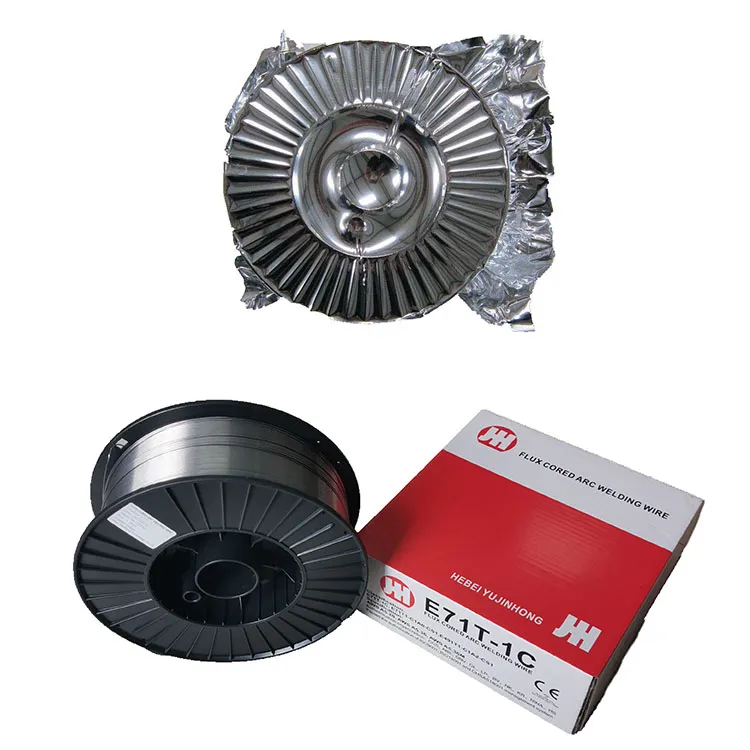mig welding wire size
Understanding MIG Welding Wire Size A Comprehensive Guide
MIG welding, or Metal Inert Gas welding, is one of the most popular and versatile welding processes used in various applications, from industrial settings to home projects. One of the most critical components of MIG welding is the welding wire, specifically its size. The right wire size is essential for achieving optimal weld quality, penetration, and overall performance. In this article, we'll delve into the intricacies of MIG welding wire size, explaining its significance and offering guidance on how to choose the right one for your needs.
What is MIG Welding?
Before we dive into wire sizes, let’s briefly touch on what MIG welding is. MIG welding is an arc welding process that utilizes a continuously fed wire electrode and an inert gas to shield the weld pool from contaminants. This method is favored for its ease of use, speed, and ability to create clean, strong welds in various metals, including steel, aluminum, and stainless steel.
The Importance of Wire Size in MIG Welding
The size of the welding wire is crucial for several reasons
1. Heat Input and Penetration The thickness of the wire affects the amount of heat generated during welding. A larger diameter wire produces a higher amperage, leading to greater heat input. This is essential for penetrating thicker materials. Conversely, smaller diameter wires are better suited for thinner materials, as they minimize the risk of burn-through.
2. Travel Speed The wire size also influences the travel speed of the welding process. A thicker wire can be fed faster, which may be beneficial in production environments where speed is vital. Smaller wires require slower travel speeds to ensure proper fusion.
3. Weld Quality and Appearance The size of the wire can affect the quality and appearance of the completed weld. Larger wires tend to produce wider beads, while smaller wires can create narrower, more precise welds. The choice here can affect both the aesthetics and strength of the joint.
Choosing the Right MIG Welding Wire Size
mig welding wire size

Choosing the correct MIG welding wire size depends on several factors
1. Material Thickness For materials that are 1/16 inch (1.6 mm) to 1/4 inch (6.35 mm) thick, a wire diameter of 0.030 inch (0.8 mm) to 0.035 inch (0.9 mm) is typically recommended. For thicker metals, such as those over 1/4 inch, consider using a wire size of 0.045 inch (1.2 mm) or larger.
2. Type of Material Different materials may require different wire sizes. For example, aluminum welding typically uses 0.035 inch (0.9 mm) to 0.045 inch (1.2 mm) wire, whereas stainless steel may require 0.030 inch (0.8 mm) to 0.035 inch (0.9 mm) wire.
3. Welding Position The position in which you are welding can also influence wire size. Vertical or overhead welding may benefit from a smaller wire size to control the molten pool better and reduce the risk of sagging or dripping.
4. Welding Environment The presence of wind or drafts can affect shielding gas performance. In outdoor environments, a slightly larger wire may be preferable to provide greater stability and control.
Common MIG Welding Wire Sizes
The most commonly used MIG welding wire sizes include
- 0.030 inch (0.8 mm) Ideal for thin materials and sheet metal as it offers better control. - 0.035 inch (0.9 mm) A versatile size that strikes a balance between heat input and weld quality, suitable for a majority of welding tasks. - 0.045 inch (1.2 mm) Suited for thicker materials and is often used in heavy industrial applications.
Conclusion
Choosing the right MIG welding wire size is crucial for achieving strong, high-quality welds. It directly impacts heat input and penetration, weld quality, and overall performance. By understanding the fundamentals of wire size in relation to the material being welded, you can make informed decisions that lead to successful welding projects. Always consider the material thickness, type, and welding environment when selecting your wire size to ensure the best results in your welding endeavors. With the right tools and knowledge, you can enhance your welding skills and produce outstanding work, whether in a professional setting or as a hobbyist.
-
Carbon Steel Welding Wire: Superior Strength & PrecisionNewsAug.26,2025
-
AWS E6013 Welding Electrodes: All-Position & Smooth Arc RodsNewsAug.25,2025
-
E312 Electrode: High Strength Welding Rod for Dissimilar MetalsNewsAug.24,2025
-
J506 Welding Rod: High-Strength, Crack-Resistant ElectrodeNewsAug.23,2025
-
E71T-1 Shielding Gas for Superior Welding Quality & EfficiencyNewsAug.22,2025
-
E316L Welding Rod: Premium 316L Stainless Steel WeldsNewsAug.11,2025


